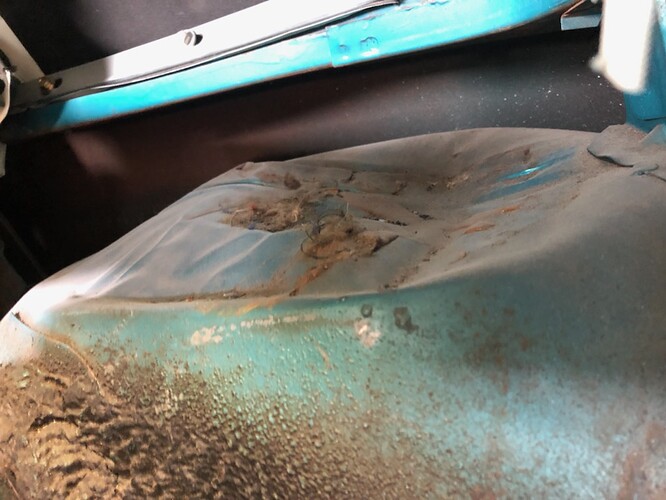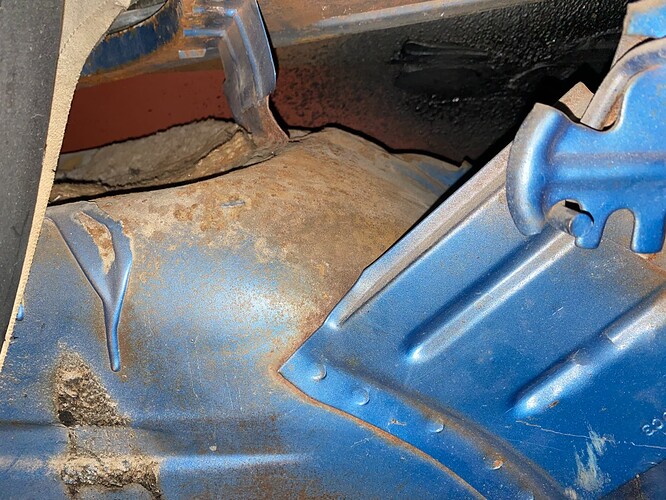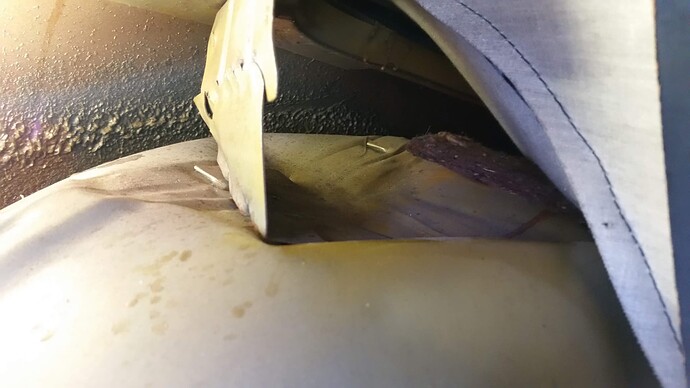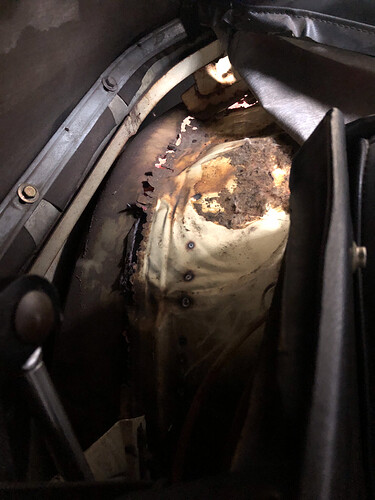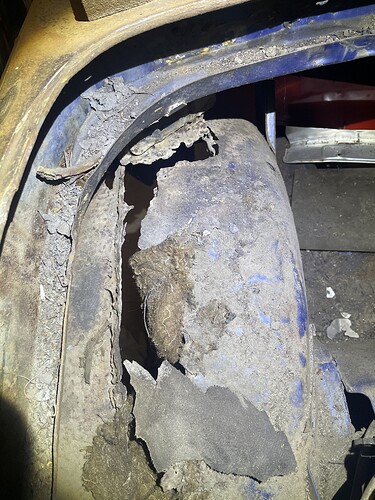Question, I am removing the inner and outer wheel wells on my 69 cougar convertible and notice the outer wheel wells are flat as though they have been pressed that way. I am removing both inner and outer wells due to rust fab work and was wondering if the outer wells are supposed to be “flat” on the top?
That’s seen on various Mustangs as well, and many attempts have been tried to determine if it is specific to plant, model, accessories, etc. without success. It appears to be a random wheel well issue.
I remember reading about these convertible Mustangs with their ‘mashed’ inner wheel housings, and how it was related to the assembly of the vehicles and the clearance required for the hydraulic top system. This must be the same phenomenon as noted here with this convertible Cougar ( and I’m sure many [ all ? ] others ) ? Here is an interesting post related to just this topic in the Vintage Mustang forum :Deforming wheel wells to allow convertible top frame to fit | Vintage Mustang Forums
Another similar Ford ‘on-the-fly’ assembly technique was used on 1983/ Mustangs with the 5.0 L V-8 when ordered with the A/T. My 1982 T-top 5.0L was a manual transmission, so it never occurred to me to look at the transmission tunnel for anything out of the ordinary ( A/T wasn’t available with the 5.0L until after 1982 ). But when I looked at ( actually under ) a new 1983 Mustang on the showroom floor ( for the first time available with the V-8 and A/T ), you could clearly see where a BFH had been used to pound the transmission tunnel outwards / upwards to created the necessary additional clearance for the A/T !
The additional inner floor pan padding and / or console did a good job of ‘camouflaging’ the resulting lumpiness !
Yup - my Dec 69 Dearborn built 70 vert looks like that too. I thought I had found collision damage and then realized they were beat down from the top. Hard to imagine a factory turning out something like that today, but Ford did 50 years ago. Kind of adds some character though. Guess those were the days of “beat to fit and paint to match”.
Same issue. If you look you can see the two weld fins (lack of better term) rusted out. I have been told they used a hammer to pound down the welded fins to avoid damage to the top. It was pounded into the wheel well top and no paint reapplied.
In my case the problem looked like a rust pinhole in the wheel well. It had been latched with roofing tar. Ended up being about 2’ x 4” patch. ![]()
All the verts ive owned and workedon & noticed had this modifiction. One had split the 2 halfs, allowing water in, rusting the floor& footwell
Thanks Mike - that makes sense about beating them down to get clearance between the lowered top and the welded fins. And they were beat to fit with no paint re-applied - ugh. Not much rust there on mine yet but I will get something on there to cover the bare metal. Had to do the same in the bottom of the trunk drop-offs. There was bare metal still visible down there at the very bottom of the quarter panels. And one of the floor pan rubber plugs had not been fully pressed into place by the factory either. If my car hadn’t been in SoCal, it would be a rusty mess.
I’m really relieved to find this wheel well deformation is “factory fit”. My ‘69 convertible is the first ragtop Cougar I’ve had and I was sure some weird rear end accident had crushed those somehow.
BUT now a follow up question: my passenger side rear well is rusted out (yet surrounded by intact steel ie supports etc). If I can buy an inner/outer replacement well isn’t it going to also need to be beaten into place. I’m cringing as I type bc I think I know the answer… but because these have structure to the back of the car, how can you replace this thing with proper alignment knowing it is a forced fit???
Mine was nowhere near as bad as yours. I went thru the wheel well, cut and ground to bare metal and fabricated a patch with some spare sheetmetal. From the back seat I used a wire brush to clean exposed surface rust visible in the pic above, then painted…may have used seam sealer. It was not visible from the trunk and the top bay had full insert to cover the hack job. ![]()
The welding was challenging, more because of fear of heat causing problems with hydraulic motor, wiring, back seat… fire watch from inside the car.
